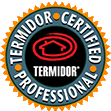Well over 12,000 ant species have been documented worldwide, and a significant number of these species have become well known for establishing habitats in multiple ecosystems all over the world. These widespread ant species are referred to as “tramp ants” due their habit of hitchhiking to new regions all over the world by means of maritime trade. One tramp ant species that has become well established in Texas is commonly referred to as the ghost ant. This species was first discovered in the United States when colonies were recovered in Texas back in 1994, and since then, these ants have likely spread to most areas of Texas and beyond.
Foraging workers from ghost ant colonies are notable for being small with lightly colored bodies, making them hard to spot, or “ghostlike” in appearance. Ghost ants are also known for their quick and erratic movements, as well as for their highly populated colonies that each contain multiple queens. The existence of multiple queens per colony allows ghost ants to rapidly establish new satellite nests in addition to the existing parent nest. These satellite nests are often found within hidden areas inside of homes, and the parent nest is almost always located outdoors. Since ant infestations can only be eliminated if all reproductive queen ants are exterminated from indoor and outdoor colonies, eradicating ghost ant infestations can be difficult.
Not only can ghost ants readily establish new colonies both indoors and outdoors, but these ants are small enough to nest within a variety of objects, including laptops, potted plants, luggage, cut flowers, and piles of clothing. This nesting habit also explains how ghost ants wind up infesting a number of goods that are shipped to regions all over the world. Since ghost ant workers only grow to be between 1 and 2 millimeters in body length, large numbers can easily stay hidden within homes by nesting within cracks, crevices, between books, beneath furniture and within wall voids.
Ghost ants are opportunistic feeders, which means that they will consume just about any edible material they encounter. These ants often group together in kitchens, cupboards and pantries in search of food, and they have been found consuming meats, sweets, cheeses and a variety of other foods. Since ghost ants clearly gravitate toward sweet-tasting foods, baits are effective for controlling infestations.
Have you ever spotted a ghost ant in your home?







